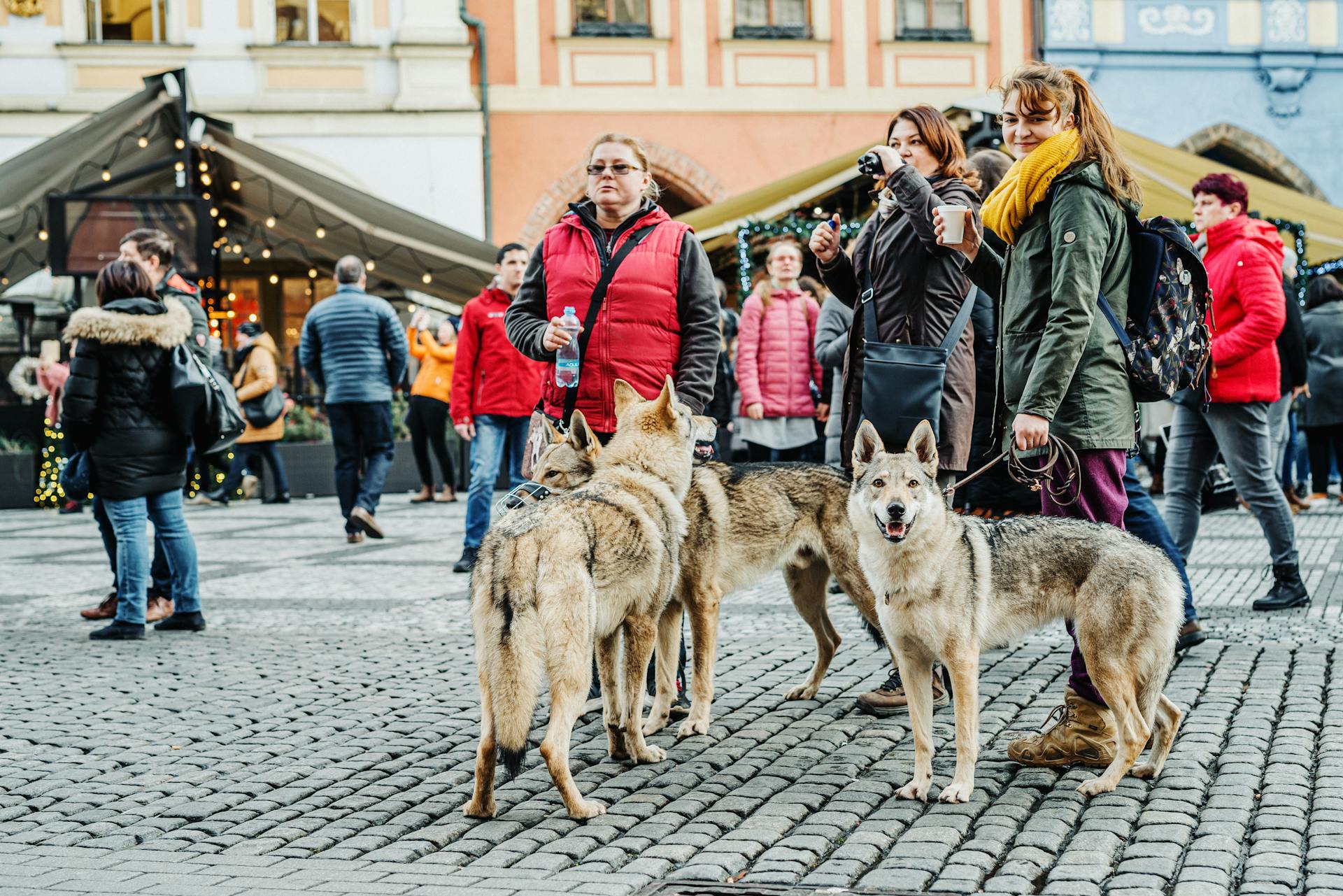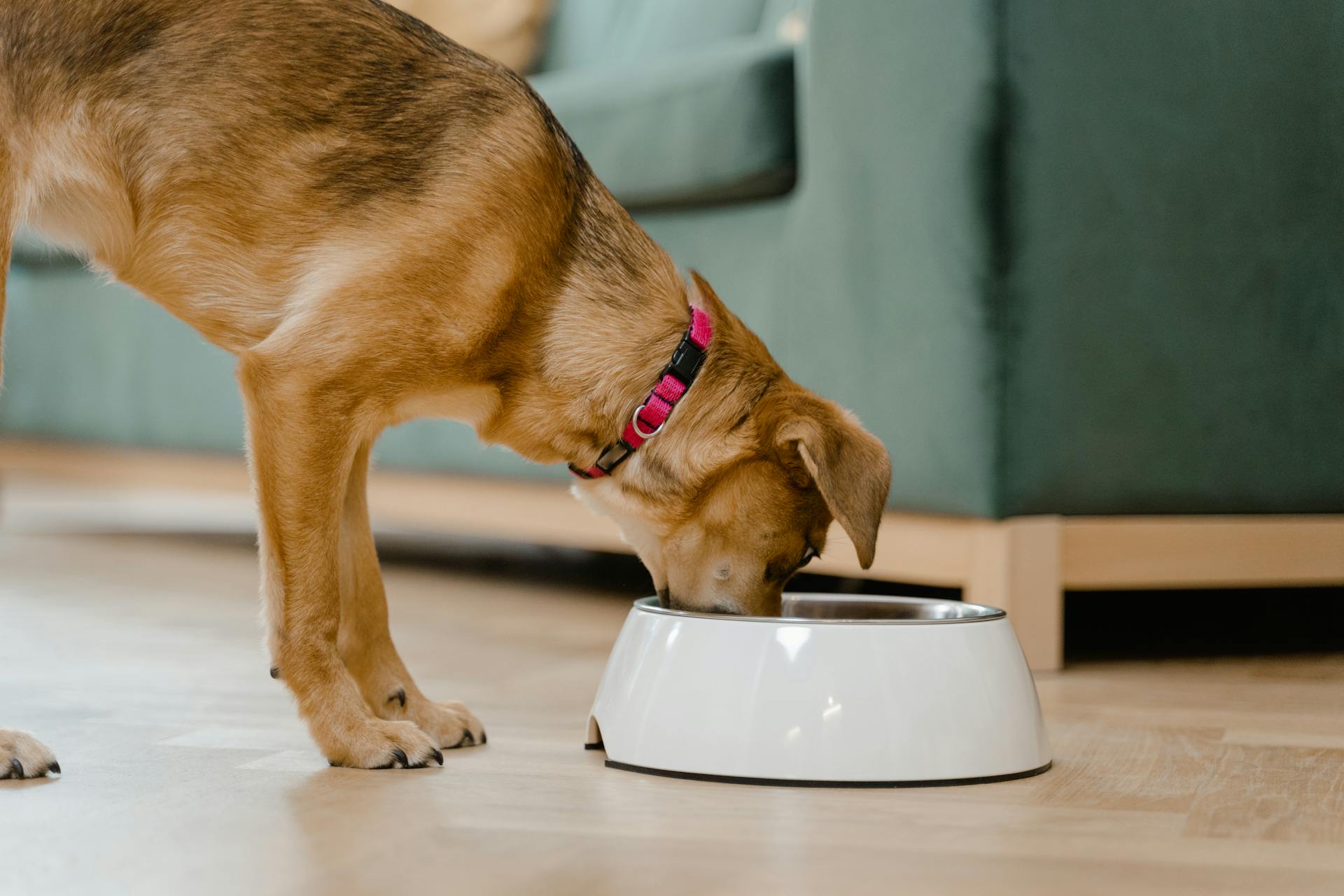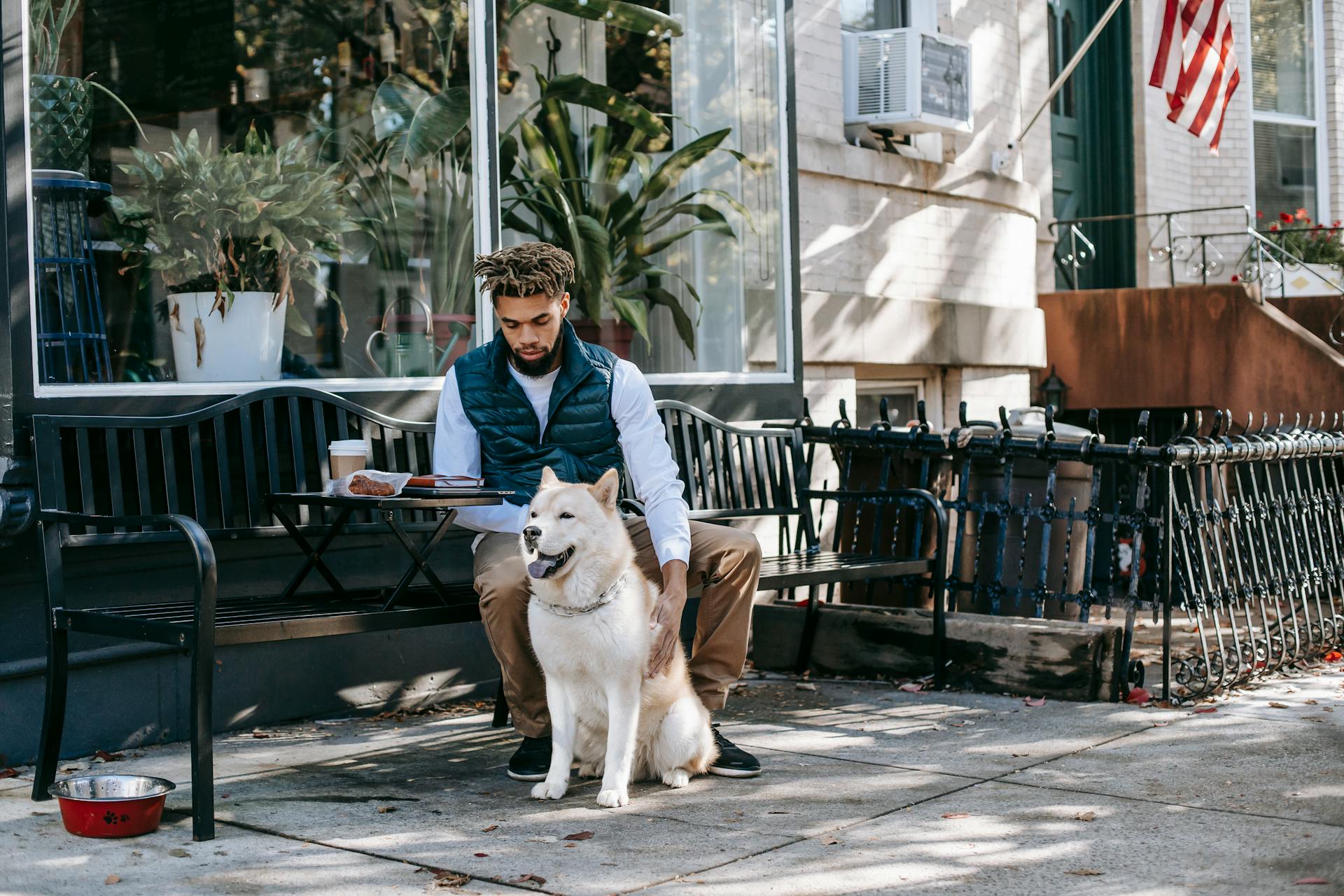
Dogs eating grasshoppers is a common behavior, but it's essential to understand the reasons behind it. Many dogs enjoy the taste and texture of grasshoppers, which can be a nutritious snack.
Some dogs might eat grasshoppers due to boredom or a lack of mental stimulation. According to research, dogs that receive inadequate exercise and mental stimulation are more likely to engage in abnormal behaviors, including eating grasshoppers.
Eating grasshoppers can provide dogs with essential vitamins and minerals. For example, grasshoppers are a good source of protein, fiber, and calcium.
Why Do Dogs Eat Grasshoppers?
Dogs eat grasshoppers due to their natural instinct to hunt and catch small prey. It's a way for them to satisfy their hunting drive.
Grasshoppers are quick and agile insects that can grab a dog's attention. They're also camouflaged and hard to spot, making them a fun challenge for dogs to catch.
Some dogs enjoy the taste and crunch of grasshoppers, which could be why they're attracted to them. Others may simply enjoy the thrill of the hunt.
Dogs may also eat grasshoppers out of curiosity, as they're naturally curious creatures. They're always looking to explore and try new things.
Here are some reasons why dogs eat grasshoppers:
- It provides mental stimulation for dogs
- It satisfies their natural hunting instincts
- It offers a new and exciting experience for dogs
Safety and Risks
Grasshoppers are generally safe for dogs to consume in small quantities, but it's essential to monitor their behavior to ensure they're not eating too many. This can cause gastrointestinal upset like diarrhea or vomiting, but these symptoms are usually mild and temporary.
If your dog develops unusual symptoms after eating grasshoppers, consult with a veterinarian. Some dogs may have allergies or sensitivities to certain insects, so be aware of your dog's individual reactions.
It's also crucial to keep your dog away from grasshoppers that have been exposed to pesticides or other chemicals, as this could lead to more serious health problems.
Dogs eating grasshoppers can pose several risks, including:
- Potential ingestion of toxic or dangerous insects
- Gastrointestinal upset from consuming specific bugs
- Allergic reactions or irritations from bug bites or stings
Eating too many grasshoppers can cause vomiting and diarrhea, which should resolve within a day. However, if your dog's symptoms persist or worsen, seek veterinary care immediately.
A blockage in the intestinal tract is a serious concern if your dog consumes grasshoppers, especially if they have a sensitive stomach. This can lead to dehydration and a lack of essential nutrients, and in severe cases, it can be fatal.
Benefits and Considerations
Cooked grasshoppers are a great source of protein for dogs, essential for growth and repair of cells in their body.
Grasshoppers contain essential amino acids, vitamins, and minerals that contribute to a dog's overall health.
Feeding dogs grasshoppers can be a good alternative for dogs with allergies to common proteins like chicken or beef.
However, it's essential to note that grasshoppers should be prepared properly before feeding them to dogs to ensure they are safe to consume.
Consuming too many grasshoppers can lead to gastrointestinal upset in dogs, manifesting as vomiting and diarrhea.
Instinctive Behavior
Dogs have natural instincts that drive them to chase and capture small creatures like grasshoppers.
This behavior is rooted in their ancestral hunting instincts, which can be triggered by the presence of grasshoppers.
It's essential for dog owners to be aware of this instinctive behavior and supervise their dogs when they are in areas where grasshoppers are present to prevent any potential harm.
Dogs will often pursue grasshoppers with great enthusiasm, so it's crucial to keep a close eye on them during outdoor activities.
Taste and Texture

Dogs have a keen sense of smell that can be attracted to the scent of grasshoppers.
The crunchy texture of grasshoppers can provide some dogs with a satisfying chewing experience.
Not all dogs may find grasshoppers palatable, and individual preferences can vary.
Grasshopper Species Considerations
Grasshopper species considerations are crucial to understanding the potential risks and benefits of feeding them to your dog. Some grasshopper species may produce more potent toxins or carry a higher risk of parasite transmission.
Not all grasshoppers are equally toxic or harmful to dogs, so it's essential to be aware of the species present in your area. This knowledge can help you determine the level of risk they pose to your pets.
To determine the level of risk, you should consult with a veterinarian. They can help you identify the specific grasshopper species and advise on the best course of action.
Here's a list of some grasshopper species to be aware of:
By understanding the specific grasshopper species considerations, you can better protect your dogs from potential harm.
Prevention and Preparation
Cooked grasshoppers are a safe option for dogs, as they eliminate any potential risks of parasites or bacteria. To prepare them, remove the wings and legs to prevent choking hazards.
Supervising your dog while they're outdoors is crucial to prevent them from eating grasshoppers. This can be done by keeping them on a leash or within a fenced area.
Training your dog to have a solid recall command can also help you call them away from grasshoppers if necessary.
How to Prevent Dog Behavior Issues
Preventing dog behavior issues can be achieved through consistent training and supervision.
Supervising your dog while they're outdoors is crucial, especially in areas where grasshoppers are present.
Training your dog to have a solid recall command can help you call them away from unwanted stimuli, including grasshoppers.
Working with a professional dog trainer can help address any behavior issues that may be contributing to your dog's undesirable behaviors.
Preparing for

Preparing for a safe and healthy experience is crucial. Cooking insects is essential to eliminate potential risks, as raw ones may contain parasites or harmful bacteria.
Raw insects can pose a significant threat to your health, so always prioritize cooking them thoroughly. I've seen firsthand how a simple cooking mistake can lead to a nasty outcome.
Removing wings and legs is also a must, as they can be a choking hazard. This is especially important when feeding insects to dogs, where a small obstruction can cause serious problems.
Grinding or chopping cooked insects into smaller pieces makes it easier for dogs to consume and reduces the risk of choking. This simple step can make a big difference in your pet's eating experience.
Featured Images: pexels.com


